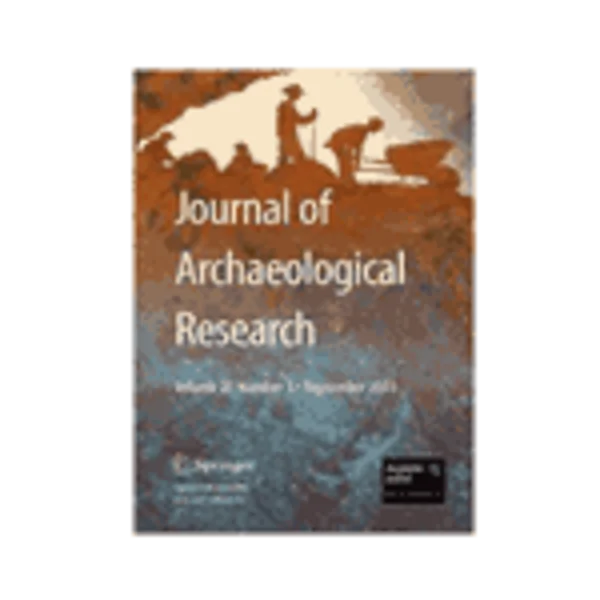-
the archaeology of tula, hidalgo, mexico
جزئیات بیشتر مقاله- تاریخ ارائه: 1392/07/24
- تاریخ انتشار در تی پی بین: 1392/07/24
- تعداد بازدید: 1179
- تعداد پرسش و پاسخ ها: 0
- شماره تماس دبیرخانه رویداد: -
the site of tula, hidalgo, mexico, is well known for its distinctive architecture and sculpture that came to light in excavations initiated some 70 years ago. less well known is the extensive corpus of archaeological research conducted over the past several decades, revealing a city that at its height covered an area of c. 16 km2 and incorporated a remarkably diverse landscape of hills, plains, alluvial valleys, and marsh. its dense, urban character is evident in excavations at over 22 localities that uncovered complex arrangements of residential compounds whose nondurable architecture left relatively few surface traces. evidence of craft production includes lithic and ceramic production loci in specific sectors of the ancient city. tula possessed a large and densely settled hinterland that apparently encompassed the surrounding region, including most of the basin of mexico, and its area of direct influence appears to have extended to the north as far as san luís potosí. tula is believed to have originated as the center of a regional state that consolidated various coyotlatelco polities and probably remnants of a previous teotihuacan-controlled settlement system. its pre-aztec history exhibits notable continuity in settlement, ceramics, and monumental art and architecture. the nature of the subsequent aztec occupation supports ethnohistorical and other archaeological evidence that tula’s ruins were what the aztecs called tollan.
مقالات جدیدترین رویدادها
-
استفاده از تحلیل اهمیت-عملکرد در ارائه الگوی مدیریت خلاقیت سازمانی و ارائه راهکار جهت بهبود
-
بررسی تاثیر ارزش وجوه نقد مازاد بر ساختار سرمایه شرکت های پذیرفته شده در بورس اوراق بهادار تهران
-
بررسی تأثیر سطح افشای ریسک بر قرارداد بدهی شرکت های پذیرفته شده در بورس اوراق بهادار تهران
-
بررسی تأثیر رتبه بندی اعتباری مبتنی بر مدل امتیاز بازار نوظهور بر نقد شوندگی سهام با تأکید بر خصوصی سازی شرکت ها
-
تأثیر آمیخته بازاریابی پوشاک ایرانی بر تصویر ذهنی مشتری پوشاک ایرانی (هاکوپیان)
-
بررسی فرآیندهای ژئوشیمیایی حاکم بر کیفیت آب زیرزمینی آبخوان عقیلی، استان خوزستان
-
مطالعه و بررسی آزمایش های مربوط به بتن خود متراکم (scc) در فاز خمیری و تفسیر نتایج بدست آمده
-
مقایسه عددی رفتار ستون های cfst و srcfst تحت بارهای متناوب
-
بررسی تاثیر تقلب در اعتبار اسنادی صادره از بانک ها در حقوق ایران
-
تحلیل پایداری چاه توسط معیارهای شکست مور – کلمب و موگی – کلمب در یکی از مخازن جنوب غرب ایران
مقالات جدیدترین ژورنال ها
-
مدیریت و بررسی افسردگی دانش آموزان دختر مقطع متوسطه دوم در دروان کرونا در شهرستان دزفول
-
مدیریت و بررسی خرد سیاسی در اندیشه ی فردوسی در ادب ایران
-
واکاوی و مدیریت توصیفی قلمدان(جاکلیدی)ضریح در موزه آستان قدس رضوی
-
بررسی تاثیر خلاقیت، دانش و انگیزه کارکنان بر پیشنهادات نوآورانه کارکنان ( مورد مطالعه: هتل های 3 و 4 ستاره استان کرمان)
-
بررسی تاثیر کیفیت سیستم های اطلاعاتی بر تصمیم گیری موفق در شرکتهای تولیدی استان اصفهان (مورد مطالعه: مدیران شرکتهای تولیدی استان اصفهان)
-
بررسی اثر بخشی فناوری اطلاعات بر عملکرد مدیران مدارس شهرستان لردگان
-
مطالعه ای بر تاثیر رسانه های اجتماعی در تشویق و ترغیب مردم برای مشارکت در انتخابات ریاست جمهوری 1400
-
تراداستان و سفر تراداستانی: گونه ها و کاربست ها
-
spatial analysis of quality of life in economic dimension of villages of lahijan town
-
a comparative study of the carbonyl positioning mechanism in the mn (co) 5 ch2f and mn (co) 5chf2 complex through quantum chemistry




سوال خود را در مورد این مقاله مطرح نمایید :